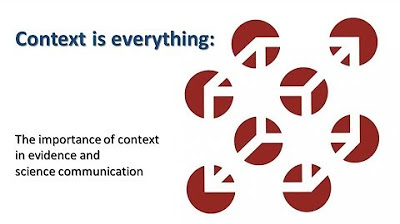The Unbelievable Science of How We Read
Summary
TLDRIn this enlightening video, Joe explores the complexities of reading, revealing that our brains interpret letters and words through a fascinating interplay of visual illusions and neural processes. He highlights how letter shapes and sizes deceive our perception, leading to the 'paradox of reading.' Joined by Dr. Erica Brozovsky, they discuss 'neural recycling' and how our brains repurpose ancient visual recognition abilities to understand written language. The video delves into the mechanics of reading, emphasizing that we often recognize words as whole shapes rather than by individual letters. This intricate process unfolds seamlessly, allowing us to enjoy reading without conscious effort.
Takeaways
- 😀 Reading is a complex process that involves various brain functions that we aren't consciously aware of.
- 🧠 Our brains perceive letters with rounded tops as smaller than those with flat tops, leading to optical illusions in letter size.
- 🔍 The 'Word Superiority Effect' suggests we recognize whole words better than individual letters.
- 📏 Reading isn't about sounding out words; the brain directly translates printed symbols into meaning.
- 🌐 The ability to read has evolved rapidly compared to the long history of human brain development.
- 🌀 Our eyes make quick, jerky movements called saccades when reading, rather than moving smoothly across the text.
- 👁️ The fovea, parafovea, and peripheral vision work together to gather information from different parts of the text.
- 🔗 Our brains have a 'shape alphabet' that helps us recognize visual patterns similar to the strokes in writing.
- ⚡ Reading is a near-instantaneous process involving the activation of neural networks that help identify words.
- 🎥 The show 'Otherwords' explores fascinating aspects of language and linguistics, further delving into topics like reading.
Q & A
What is the main focus of Joe's discussion in the video?
-Joe discusses how reading is a complex process that involves various visual and cognitive illusions that affect how we perceive letters and words.
What trick does Joe mention that affects how we perceive letters?
-He explains that letters that appear to be the same size are often not the same height, which is a visual illusion that helps our brains recognize letters more effectively.
What is the 'Word Superiority Effect'?
-The Word Superiority Effect refers to the phenomenon where people recognize whole words more accurately than individual letters, suggesting that our brains process words as complete units rather than letter by letter.
How do our eyes move when we read, according to the video?
-Our eyes do not move smoothly across the text but rather make quick jumps called saccades, which last about 20 to 35 milliseconds, and can skip over certain words entirely.
What is 'neural recycling' as mentioned by Dr. Erica Brozovsky?
-Neural recycling is the theory that our brains repurpose existing neural functions to learn new skills, such as reading, despite not having evolved specifically for it.
What does the fovea refer to in the context of reading?
-The fovea is the central part of our vision where photoreceptors are most densely packed, allowing us to see details clearly, while our peripheral vision is less acute.
Why do our brains fill in gaps while reading?
-Our brains fill in gaps during eye movements to maintain a continuous perception of the world, creating a seamless experience even when our eyes are rapidly shifting.
What role does the parafovea play in reading?
-The parafovea provides blurry but useful information about the initial letters of upcoming words, helping our brains anticipate what comes next.
How do the shapes of letters influence our reading ability?
-The shapes of letters are recognized quickly and easily by our brains, which have evolved to identify patterns and contours, facilitating faster reading.
What conclusion does Joe reach about reading as a skill?
-Joe concludes that reading is an extraordinary skill that seems automatic but involves complex cognitive processes and visual recognition mechanisms that occur beneath our conscious awareness.
Outlines

このセクションは有料ユーザー限定です。 アクセスするには、アップグレードをお願いします。
今すぐアップグレードMindmap

このセクションは有料ユーザー限定です。 アクセスするには、アップグレードをお願いします。
今すぐアップグレードKeywords

このセクションは有料ユーザー限定です。 アクセスするには、アップグレードをお願いします。
今すぐアップグレードHighlights

このセクションは有料ユーザー限定です。 アクセスするには、アップグレードをお願いします。
今すぐアップグレードTranscripts

このセクションは有料ユーザー限定です。 アクセスするには、アップグレードをお願いします。
今すぐアップグレード関連動画をさらに表示

Context is everything: The importance of context in evidence and science communication

How Do Optical Illusions Work?

Brain Games- Autokinetic Images

Why did some people see a gold and white dress? | Our Brain

The Reading Brain | How We Learn To Read

Seeing the world as it isn't | Daniel Simons | TEDxUIUC
5.0 / 5 (0 votes)
